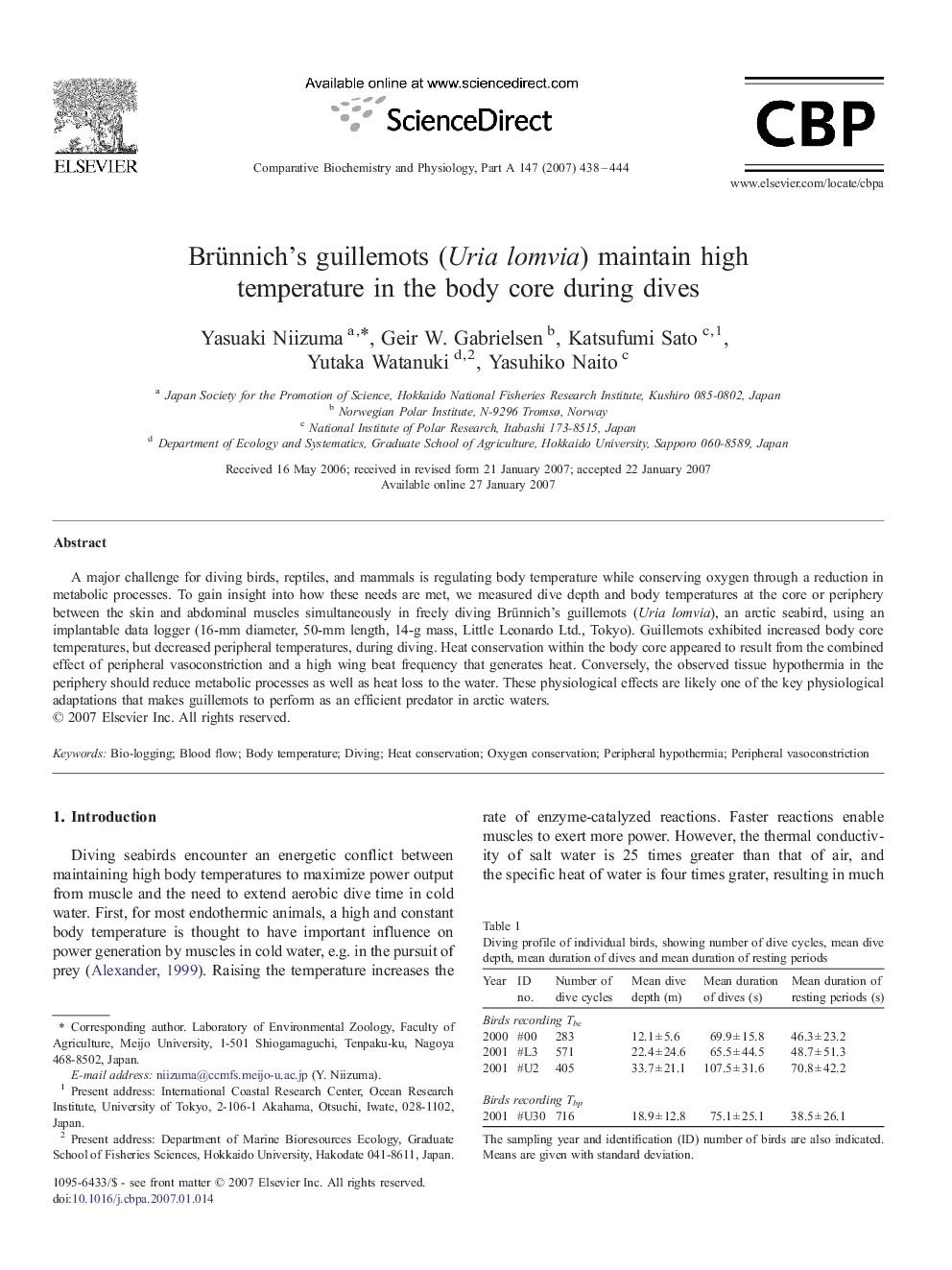| Article ID | Journal | Published Year | Pages | File Type |
|---|---|---|---|---|
| 1974267 | Comparative Biochemistry and Physiology Part A: Molecular & Integrative Physiology | 2007 | 7 Pages |
A major challenge for diving birds, reptiles, and mammals is regulating body temperature while conserving oxygen through a reduction in metabolic processes. To gain insight into how these needs are met, we measured dive depth and body temperatures at the core or periphery between the skin and abdominal muscles simultaneously in freely diving Brünnich's guillemots (Uria lomvia), an arctic seabird, using an implantable data logger (16-mm diameter, 50-mm length, 14-g mass, Little Leonardo Ltd., Tokyo). Guillemots exhibited increased body core temperatures, but decreased peripheral temperatures, during diving. Heat conservation within the body core appeared to result from the combined effect of peripheral vasoconstriction and a high wing beat frequency that generates heat. Conversely, the observed tissue hypothermia in the periphery should reduce metabolic processes as well as heat loss to the water. These physiological effects are likely one of the key physiological adaptations that makes guillemots to perform as an efficient predator in arctic waters.
